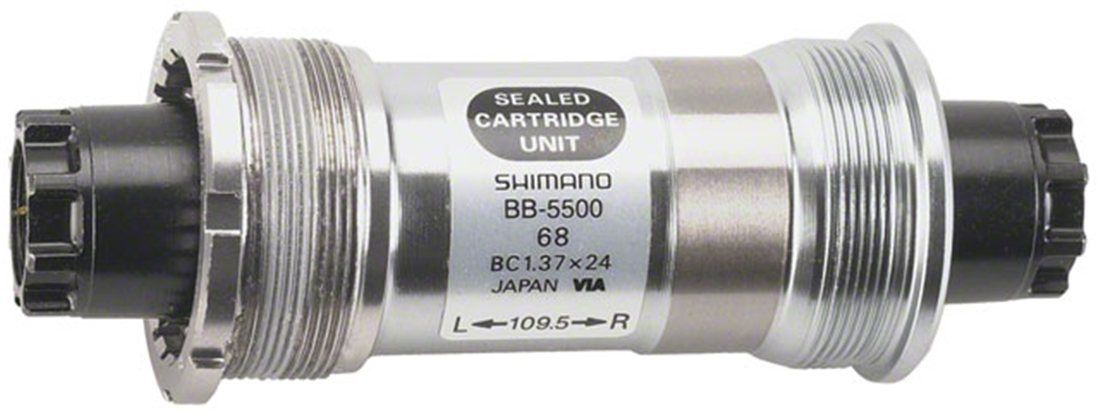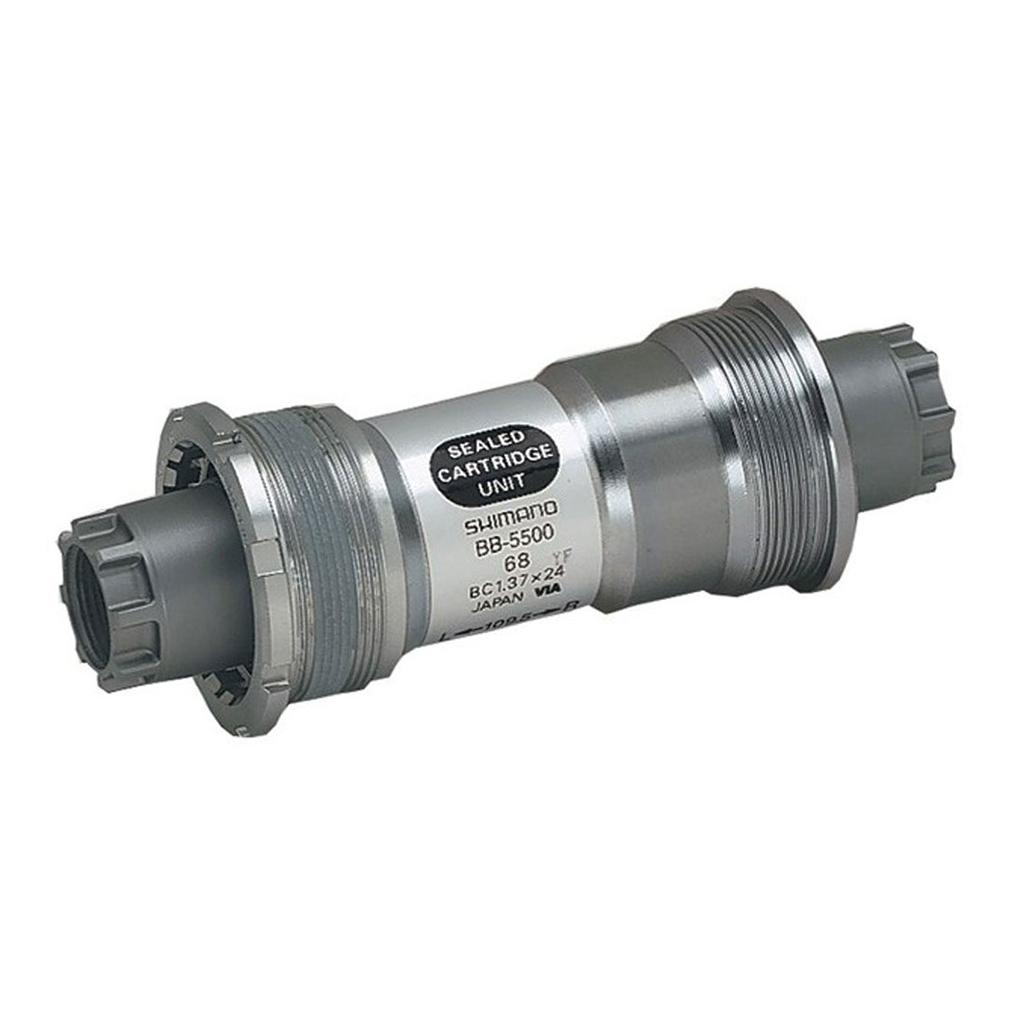What is a Bottom Bracket and Why is it Important?
A bottom bracket is a crucial component of a bike’s drivetrain, playing a vital role in the smooth operation of the pedals and overall performance of the bicycle. Located at the bottom of the frame, the bottom bracket connects the crankset to the frame, allowing the pedals to rotate freely. A reliable bottom bracket is essential for efficient power transfer, reduced friction, and a comfortable riding experience.
The bottom bracket is responsible for supporting the crankset, which converts the rider’s pedaling motion into rotational energy. A well-functioning bottom bracket ensures that this energy is transferred efficiently to the wheels, resulting in a smoother ride and improved performance. Additionally, a good bottom bracket helps to reduce wear and tear on other components, such as the crankset and chainrings, by minimizing friction and stress.
In the context of the Shimano 105 bottom bracket, this component is designed to provide a high level of performance, durability, and compatibility with Shimano 105 groupsets. By understanding the importance of a bottom bracket and its role in the drivetrain, cyclists can appreciate the value of investing in a high-quality component like the Shimano 105 bottom bracket.
How to Choose the Right Bottom Bracket for Your Bike
When selecting a bottom bracket, there are several factors to consider to ensure compatibility and optimal performance. The type of bike, riding style, and compatibility with other components are all crucial considerations. For road bikes, a bottom bracket with a high level of stiffness and durability is essential, while mountain bikes require a bottom bracket that can withstand the rigors of off-road riding.
One of the most important factors to consider is the type of crankset and chainrings used on the bike. The bottom bracket must be compatible with these components to ensure smooth operation and efficient power transfer. For example, the Shimano 105 bottom bracket is designed to work seamlessly with Shimano 105 groupsets, providing a high level of performance and reliability.
Another key consideration is the material used in the construction of the bottom bracket. Options include steel, aluminum, and ceramic, each with its own strengths and weaknesses. Steel bottom brackets are known for their durability and resistance to corrosion, while aluminum bottom brackets are lightweight and corrosion-resistant. Ceramic bottom brackets offer a high level of smoothness and durability, but can be more expensive.
Additionally, the bearing type and quality should also be considered. High-quality bearings, such as those found in the Shimano 105 bottom bracket, provide a smooth and efficient pedaling experience, while lower-quality bearings can lead to friction and wear on other components.
By considering these factors and choosing a bottom bracket that meets the specific needs of the bike and riding style, cyclists can ensure optimal performance, reliability, and durability. Whether upgrading an existing bike or building a new one, selecting the right bottom bracket is a critical decision that can make a significant difference in the overall riding experience.
A Closer Look at the Shimano 105 Bottom Bracket
The Shimano 105 bottom bracket is a high-performance component designed to provide smooth operation, durability, and compatibility with Shimano 105 groupsets. This bottom bracket features a robust design with a steel axle and aluminum cups, providing a high level of stiffness and resistance to corrosion.
One of the key benefits of the Shimano 105 bottom bracket is its smooth operation. The bottom bracket features a high-quality bearing system with sealed bearings, providing a smooth and efficient pedaling experience. This is particularly noticeable when riding at high speeds or over long distances, where a smooth bottom bracket can make a significant difference in comfort and performance.
In addition to its smooth operation, the Shimano 105 bottom bracket is also designed to be durable and long-lasting. The steel axle and aluminum cups provide a high level of strength and resistance to corrosion, ensuring that the bottom bracket will withstand the rigors of regular use. This is particularly important for cyclists who ride in harsh weather conditions or over rough terrain, where a reliable bottom bracket is essential.
Another key benefit of the Shimano 105 bottom bracket is its compatibility with Shimano 105 groupsets. This bottom bracket is designed to work seamlessly with Shimano 105 cranksets and chainrings, providing a high level of performance and reliability. This makes it an ideal choice for cyclists who are looking to upgrade their bike’s performance without having to replace other components.
Overall, the Shimano 105 bottom bracket is a high-performance component that provides smooth operation, durability, and compatibility with Shimano 105 groupsets. Its robust design, high-quality bearing system, and durable construction make it an ideal choice for cyclists who are looking to upgrade their bike’s performance and reliability.
Installation and Maintenance Tips for Your Shimano 105 Bottom Bracket
Installing and maintaining the Shimano 105 bottom bracket requires attention to detail and the right tools. To ensure a smooth and trouble-free installation, follow these step-by-step instructions:
Tools needed:
- Bottom bracket tool (Shimano TL-FC16 or equivalent)
- Socket wrench or Allen wrench (depending on the type of crankset)
- Torque wrench
- Grease (Shimano or equivalent)
Installation steps:
- Remove the old bottom bracket and clean the area around the bottom bracket shell.
- Apply a thin layer of grease to the new bottom bracket and insert it into the bottom bracket shell.
- Use the bottom bracket tool to tighten the bottom bracket in a star pattern, ensuring even pressure and avoiding over-tightening.
- Use the socket wrench or Allen wrench to tighten the crankset bolts to the specified torque.
Maintenance tips:
- Regularly inspect the bottom bracket for signs of wear or damage.
- Apply grease to the bottom bracket bearings every 100-200 miles or as needed.
- Check the crankset bolts for tightness and adjust as needed.
Troubleshooting common issues:
- Creaking or grinding noises: Check the bottom bracket for proper installation and tighten the crankset bolts if necessary.
- Bearing failure: Inspect the bottom bracket bearings for signs of wear or damage and replace if necessary.
By following these installation and maintenance tips, you can ensure a smooth and trouble-free operation of your Shimano 105 bottom bracket.
Comparing the Shimano 105 Bottom Bracket to Other Options
The Shimano 105 bottom bracket is a popular choice among cyclists, but it’s not the only option available. Other manufacturers, such as SRAM and Campagnolo, offer their own versions of bottom brackets that may be suitable for different types of bikes and riding styles.
SRAM’s GXP bottom bracket, for example, is a popular choice among mountain bikers and cyclocross riders. It features a unique design that allows for easier installation and maintenance, and is compatible with a wide range of SRAM cranksets. However, it may not be as durable as the Shimano 105 bottom bracket, and some riders have reported issues with creaking and grinding.
Campagnolo’s Ultra-Torque bottom bracket, on the other hand, is a high-end option that is designed for road bikes and triathlon bikes. It features a unique design that allows for improved power transfer and reduced friction, and is compatible with a wide range of Campagnolo cranksets. However, it is generally more expensive than the Shimano 105 bottom bracket, and may require more maintenance and adjustment.
In comparison to these options, the Shimano 105 bottom bracket offers a unique combination of durability, smooth operation, and compatibility with Shimano 105 groupsets. It is a popular choice among road bikers and triathletes, and is known for its reliability and performance. However, it may not be the best choice for mountain bikers or cyclocross riders, who may prefer the SRAM GXP bottom bracket or other options.
Ultimately, the choice of bottom bracket will depend on the individual rider’s needs and preferences. By considering factors such as bike type, riding style, and compatibility with other components, riders can choose the best bottom bracket for their needs and enjoy improved performance and reliability.
Real-World Performance and Reviews of the Shimano 105 Bottom Bracket
The Shimano 105 bottom bracket has received widespread acclaim from cyclists and bike enthusiasts alike. Many have praised its smooth operation, durability, and compatibility with Shimano 105 groupsets.
One reviewer noted, “I’ve been using the Shimano 105 bottom bracket on my road bike for several months now, and I’ve been impressed with its performance. It’s smooth, quiet, and has required minimal maintenance.”
Another reviewer commented, “I was skeptical about upgrading to the Shimano 105 bottom bracket, but I’m glad I did. It’s made a noticeable difference in my bike’s performance, and I’ve experienced no issues with creaking or grinding.”
However, not all reviewers have been completely satisfied with the Shimano 105 bottom bracket. Some have reported issues with bearing failure and creaking, although these issues appear to be relatively rare.
Overall, the Shimano 105 bottom bracket has received overwhelmingly positive reviews from cyclists and bike enthusiasts. Its smooth operation, durability, and compatibility with Shimano 105 groupsets make it a popular choice among road bikers and triathletes.
In addition to its performance, the Shimano 105 bottom bracket has also been praised for its ease of installation and maintenance. Many reviewers have noted that it is relatively easy to install and maintain, even for those with limited mechanical experience.
While the Shimano 105 bottom bracket may not be the cheapest option available, its performance and durability make it a worthwhile investment for many cyclists. Whether you’re a seasoned pro or just starting out, the Shimano 105 bottom bracket is definitely worth considering.
Troubleshooting Common Issues with the Shimano 105 Bottom Bracket
While the Shimano 105 bottom bracket is a reliable and durable component, issues can still arise. Here are some common problems that may occur and their solutions:
Creaking or grinding noises:
- Check the bottom bracket for proper installation and tighten the crankset bolts if necessary.
- Apply grease to the bottom bracket bearings and reassemble the crankset.
- If the issue persists, consider replacing the bottom bracket bearings or the entire bottom bracket.
Bearing failure:
- Inspect the bottom bracket bearings for signs of wear or damage.
- Replace the bearings with new ones, following the manufacturer’s instructions.
- Consider upgrading to a higher-quality bottom bracket or bearings for improved durability.
Loose or damaged crankset:
- Check the crankset bolts for tightness and adjust as needed.
- Inspect the crankset for signs of damage or wear and replace if necessary.
- Consider upgrading to a higher-quality crankset or bottom bracket for improved performance.
Other issues:
- Consult the Shimano 105 bottom bracket manual or online resources for troubleshooting guides.
- Contact a professional bike mechanic or Shimano authorized dealer for assistance.
By following these troubleshooting steps, you can identify and resolve common issues with the Shimano 105 bottom bracket, ensuring optimal performance and reliability.
Conclusion: Is the Shimano 105 Bottom Bracket Right for You?
In conclusion, the Shimano 105 bottom bracket is a reliable and durable component that can enhance the performance of your bike. Its smooth operation, durability, and compatibility with Shimano 105 groupsets make it a popular choice among road bikers and triathletes.
By considering the factors discussed in this article, including bike type, riding style, and compatibility with other components, you can determine if the Shimano 105 bottom bracket is the right choice for your bike and riding needs.
While the Shimano 105 bottom bracket may not be the cheapest option available, its performance and durability make it a worthwhile investment for many cyclists. Whether you’re a seasoned pro or just starting out, the Shimano 105 bottom bracket is definitely worth considering.
Ultimately, the decision to upgrade to the Shimano 105 bottom bracket depends on your individual needs and preferences. By weighing the pros and cons and considering your specific requirements, you can make an informed decision that will enhance your cycling experience.
Remember to always follow proper installation and maintenance procedures to ensure optimal performance and reliability from your Shimano 105 bottom bracket.








